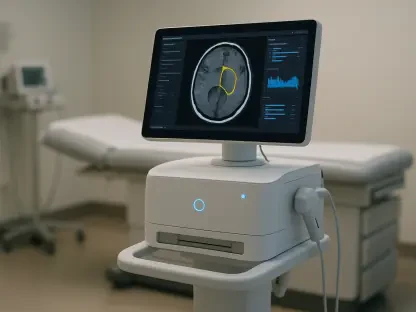In a landmark announcement set to revolutionize genomic research, Illumina has unveiled its breakthrough in spatial technology for whole-transcriptome sequencing, slated for release in 2026. This cutting-edge innovation is designed to dramatically enhance researchers’ capabilities by offering the ability to examine the spatial proximity of millions of cells in a single experiment. Boasting a capture area nine times larger and resolution four times greater than existing technologies, this new development promises to provide unparalleled depth and clarity in understanding complex biological systems.
Enhanced Capabilities for Research
By being compatible with Illumina’s powerful NextSeq and NovaSeq NGS platforms and paired with the sophisticated Illumina Connected Multiomics (ICM) software, this advanced spatial technology is set to revolutionize how scientists visualize and analyze multiomic datasets. This integrated approach will significantly aid researchers in gaining profound insights into critical areas such as tumor microenvironments, intricate disease pathways, and the complexities of neurobiology. The synergy between this new technology and existing platforms aims to push the boundaries of what is currently possible in genomics research.
Steve Barnard, Illumina’s Chief Technology Officer, emphasized that spatial transcriptomics would open up new avenues to deeper understandings of cellular functions, which are paramount for driving groundbreaking scientific discoveries. This technology is anticipated to augment our comprehension of biological interactions and unravel the intricate mechanisms governing disease development. The magnitude of this advancement suggests that it could significantly alter the landscape of genomic studies, offering unexplored tools and insights for scientists around the world.
Early Data and Presentation
The preliminary details and early data from this groundbreaking technology will be presented at the Advances in Genome Biology and Technology (AGBT) General Meeting in Florida. This prestigious gathering will serve as a platform for introducing Illumina’s spatial technology to a global audience of genomics experts and researchers. The participation of renowned institutions such as the Broad Institute, St. Jude’s Children’s Research Hospital, and the Translational Genomics Research Institute (TGen) underscores the importance and anticipated impact of this technological innovation.
One notable researcher, Nicholas Banovich from TGen, has highlighted the transformative potential of the new spatial technology for fields like pulmonary fibrosis research. He emphasized its ability to identify molecular dysregulation and aid in the identification of therapeutic targets that could potentially slow disease progression. Banovich’s insights are particularly valuable, providing a glimpse into the practical applications and benefits that this technology might offer in tackling pressing medical challenges. The convergence of expertise at the AGBT meeting is expected to generate significant discussions and collaborations that could further amplify the technology’s reach and effectiveness.
Collaboration and Future Prospects
In addition to unveiling the new technology, Illumina has announced an exciting collaboration with the Broad Institute through the Spatial Flagship Project. This initiative aims to demonstrate the transformative potential of large-scale spatial datasets and is poised to set new benchmarks in the field of genomics. Through this project, research groups will gain early access to Illumina’s innovative spatial technology via the Broad Institute’s Spatial Technology Platform (STP) pipeline. The collaboration represents a significant step forward in sharing and disseminating this breakthrough technology to a broader scientific community.
By enabling early access to the technology, Illumina and the Broad Institute aim to accelerate the development and application of spatial transcriptomics, facilitating pioneering research endeavors. The shared vision of leveraging large-scale spatial datasets has the potential to unlock new dimensions in understanding cellular interactions, disease mechanisms, and therapeutic targets. This collaboration reflects a commitment to advancing the frontiers of genomic research and could pave the way for unprecedented scientific discoveries in the years to come.
Charting the Future of Genomic Research
Illumina has made a landmark announcement that is poised to revolutionize genomic research with its latest breakthrough in spatial technology for whole-transcriptome sequencing, expected to be released in 2026. This innovative advancement is set to vastly improve researchers’ abilities by enabling them to analyze the spatial relationships of millions of cells in a single experiment. The new technology features a capture area nine times larger and resolution four times greater than current technologies, which promises to deliver unprecedented depth and clarity in examining complex biological systems. This remarkable development will provide a deeper understanding of how cells interact within their environments, which could lead to significant insights and advancements in biomedical research. By offering such high-resolution data, Illumina’s breakthrough is set to become an indispensable tool for scientists striving to uncover the intricacies of gene expression and cellular behavior, paving the way for even more detailed and informative studies in the field.









